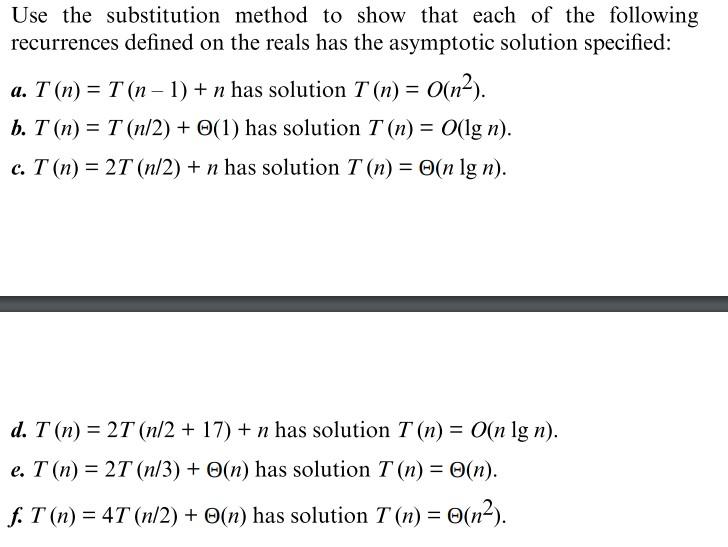Answered step by step
Verified Expert Solution
Question
1 Approved Answer
1 . ( 1 2 pts ) Use the substitution method to show that each of the following recurrences defined has the asymptotic solution specified:
pts Use the substitution method to show that each of the following recurrences defined has
the asymptotic solution specified:
a Tn Tn n has solution Tn On
b Tn TnTheta has solution Tn O lg n
c TnTn n has solution TnTheta n lg n
d TnT n n has solution Tn O n lg n
e TnTnTheta n has solution TnTheta n
f TnTnTheta n has solution TnTheta n
pts For each of the following recurrences, sketch its recursion tree, and guess a good
asymptotic upper bound on its solution. Use the substitution method to verify your answer.
a Tn Tn n
b TnTn n
c TnTn n
d TnTn
pts Use the master method to give tight asymptotic bounds for the following recurrences.
a TnTn
b TnTn
c TnTn lg n
d TnTn n
e TnTn n
pt Give the asymptotically tight upper and lower bounds for Tn in each of the following
algorithmic recurrences. Justify your answers.
a TnTn n
b Tn Tn n
c TnTn n

Step by Step Solution
There are 3 Steps involved in it
Step: 1

Get Instant Access to Expert-Tailored Solutions
See step-by-step solutions with expert insights and AI powered tools for academic success
Step: 2

Step: 3

Ace Your Homework with AI
Get the answers you need in no time with our AI-driven, step-by-step assistance
Get Started


